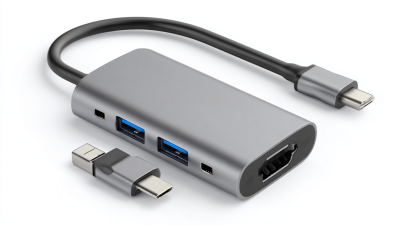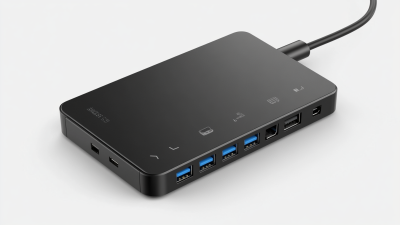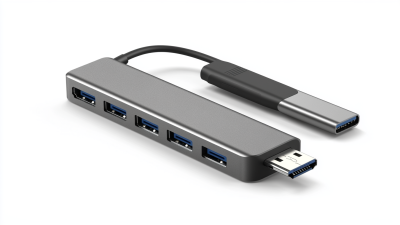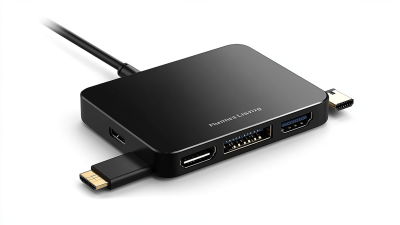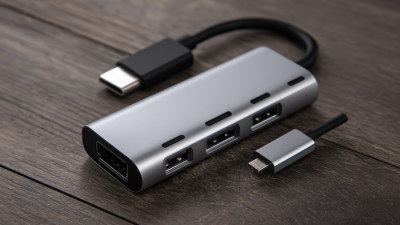
-
Home
-
Products
-
About Us
-
OEM&ODM
-
News
-
Contact Us
Inquiry
Form loading...

In today's fast-paced digital landscape, efficient connectivity has become paramount for enhancing productivity in the workplace. The Usb-C 3.0 Hub 4 Ports stands at the forefront of this technological evolution, providing a seamless solution for users who demand versatility and speed in their devices. According to a recent report by the International Data Corporation (IDC), the global USB hub market is projected to reach $1.5 billion by 2025, driven by an increasing reliance on portable devices and the expansion of remote work. This trend underscores the necessity for innovative products that cater to diverse connectivity needs. Equipped with multiple ports, the Usb-C 3.0 Hub 4 Ports not only facilitates seamless data transfer but also enables users to connect a variety of peripherals, transforming any workspace into an efficient productivity hub—essentially the backbone of modern business operations.

In today’s fast-paced work environment, the ability to seamlessly connect multiple devices is more crucial than ever. A USB-C 3.0 hub with four ports can significantly enhance productivity by allowing users to link their laptops, monitors, keyboards, and other peripherals effortlessly. According to a report from IDC, approximately 70% of modern workers rely on multiple devices to complete their tasks, making effective connectivity solutions essential for efficient workflows.

Tips for maximizing productivity with your USB-C hub include organizing your workspace to reduce clutter, ensuring your devices are compatible with USB-C standards, and taking advantage of hub features such as power delivery. A well-organized workspace can lead to a 20% increase in productivity, as suggested by a study from Steelcase. Regularly updating your devices for optimal performance can also prevent connectivity issues and maintain workflow efficiency.
Additionally, utilizing docking stations combined with USB-C hubs can further streamline your setup, especially for remote work scenarios. Reports indicate that 68% of remote workers have attempted to design a workspace that closely resembles their in-office environment, indicating a strong preference for efficient connectivity solutions that facilitate a professional setting, regardless of location. Implementing these strategies with a USB-C 3.0 hub will undoubtedly contribute to an empowered and productive workspace.
The innovation of USB-C 3.0 hubs has revolutionized the way we connect peripherals in our workspace. With an impressive bandwidth of 40Gbps, these hubs eliminate latency, providing seamless data transmission and enhancing overall productivity. As the demand for efficient workspaces grows, the USB hub market is projected to reach a value of $720 million by 2025, with an anticipated rise to $770 million by 2026, driven by a robust compound annual growth rate of 7%. This trend highlights the increasing reliance on USB-C technology in modern office setups.
The versatility of USB-C 3.0 is evident in its ability to serve multiple functions beyond simple connectivity. Modern hubs support a range of devices, catering to the needs of professionals who use laptops as their primary tools. With multiple ports, users can connect external displays, storage devices, and even charge their devices simultaneously, all through a single hub. This multifaceted capability not only alleviates interface dilemmas but also enhances the aesthetic appeal of workspace organization, making it an essential accessory for those who prioritize both form and function.
The chart above illustrates the data throughput of various USB standards, highlighting the significant improvements introduced with each iteration. USB-C 3.0 provides a remarkable speed advantage over USB 2.0, making it an essential component in modern, efficient workspaces.
When choosing a 4-port USB-C hub for your workspace, there are several key features to consider that will maximize your connectivity and efficiency. First, ensure that the hub supports multiple display outputs, ideally allowing for dual 4K screens. This is essential for those who need extended desktop space for multitasking. Additionally, fast data transfer rates are crucial; look for hubs that offer USB 3.0 or Thunderbolt support to facilitate quick file transfers.
Tips: When setting up your workspace, position your USB-C hub within easy reach to avoid frustration while connecting devices. Also, consider investing in a hub with a power delivery feature, which allows you to charge your laptop while using other USB devices. This not only simplifies your setup but also keeps your workspace tidy.
Lastly, pay attention to compatibility; ensure that the hub is designed to work with your devices, including laptops, tablets, or smartphones. A well-chosen USB-C hub can greatly enhance your productivity and streamline your workflow, making it an essential accessory for any modern workspace.
| Feature | Description | Importance |
|---|---|---|
| Data Transfer Speed | Supports up to 5 Gbps for fast file transfers. | High speed ensures efficient workflow. |
| Power Delivery | Allows charging of devices while transferring data. | Convenience of charging and connecting simultaneously. |
| Compatibility | Works with a wide range of USB-C devices. | Flexibility in use with different devices. |
| Compact Design | Lightweight and portable design for ease of use. | Ideal for on-the-go professionals. |
| Multiple Ports | Features 4 USB-C ports for various connections. | Enhances multitasking capabilities. |
| Durability | Built with high-quality materials to withstand daily use. | Longevity and reliability in a workspace. |
The shift towards USB-C 3.0 hubs has transformed the efficiency of workspaces, significantly outpacing traditional USB hubs in performance and versatility. According to a market analysis by Research and Markets, the global USB-C hub market is projected to grow at a CAGR of 20.5% from 2021 to 2026, driven largely by the increasing adoption of devices featuring USB-C ports. This shows a clear preference for technology that not only enhances connectivity but also supports faster data transfer rates, with USB-C 3.0 hubs offering speeds of up to 5Gbps, compared to the 480Mbps cap of USB 2.0 ports commonly found in traditional hubs.
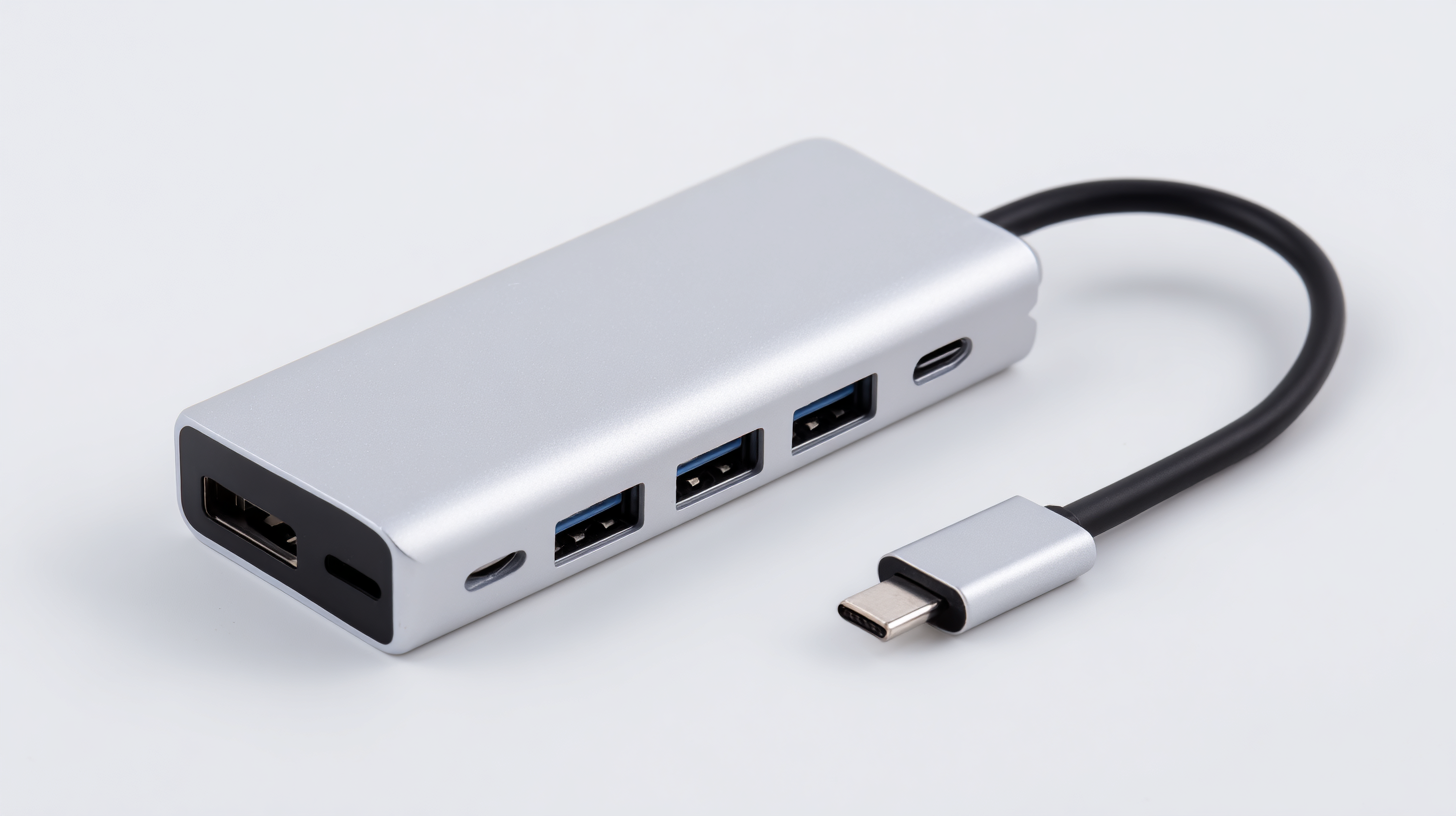
Moreover, USB-C 3.0 hubs efficiently reduce cable clutter and the need for multiple adapters. A study by TechCrunch pointed out that users experience a 30% increase in productivity when using a streamlined USB-C hub setup versus traditional connections. The enhanced functionality, including support for power delivery, video output, and data transfer, makes USB-C hubs indispensable in modern work environments. As businesses continue to embrace more compact and mobile workflows, the efficiency gained from adopting USB-C technology will likely lead to increased demand and integration into various devices and platforms.
In today's fast-paced work environments, businesses are increasingly turning to innovative USB-C hubs to streamline their operations and enhance productivity. These hubs, equipped with multiple ports, allow employees to seamlessly connect various devices, such as laptops, monitors, and external storage. For example, a marketing agency might integrate a USB-C hub into their setup to connect multiple monitors during creative brainstorming sessions, ensuring that all team members can visualize ideas in real-time. This capability not only boosts collaboration but also speeds up decision-making processes.
Furthermore, companies in the tech sector are leveraging USB-C hubs to facilitate remote work. By providing employees with these hubs, they can easily connect to different peripherals, enhancing their home office experiences. A software development team, for instance, can set up their home workstations to include external keyboards, mice, and additional displays, thus replicating their office environments. As a result, productivity levels remain high, and teams can maintain their workflow regardless of their physical location. These real-world applications highlight the pivotal role that USB-C hubs play in creating efficient and adaptable workspaces.
